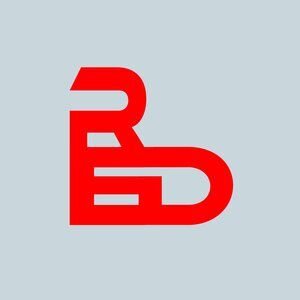I’ve found that writing inside Notion is quite pleasing due to the clean interface. The ability to organize narrative elements inside a database is one of many advantages for writers. In this template bundle I created a jumping off point for bloggers, freelancers, and book writers to start drafting with Notion’s boardview (a.k.a kanban).
Dashboards
Notion Build With Me: Tasks Dashboard (Gamification)
Want to gamify your Notion workspace but don’t know where to start? I recommend starting with a single tasks database to understand the basics of if statements, relations, and rollups. I go over all three in this video, and by the end we create a template that can be duplicated. As well, I go over how to connect databases to one another and how back-linking can be a good substitute for the relation property.
Notion Use-Case: How To Use Back Links Inside An Inline Template
Dashboards, Relations, Planning
Notion Dashboard: Meal Planner And Ingredient Archive
I set out to design an alternative to a recipe dashboard in Notion I made a few months back. Included is a calendar to plan meals that is connected to an ingredients database to archive several meals in relation to say “eggs.” Overtime, the user can reference the ingredients database to determine what meal to make next.
Notion Template: Simple Reading Log With Progress Bar
Relations, Program Functions, Dashboards
Zettelkasten In Notion And How I Use Its Principles
I've always wanted to tackle the zettelkasten method inside Notion, but the lack of backlinking has held me back thus far. Now that linking backward is available, I'm able to quickly group related notes without excessive relation properties. Today, I want to show you how I plan to implement Zettelkasten principles into my Notion workspace.
Free Template: A Workout Dashboard Inside Notion
In the second episode of my "learning formulas in Notion" series, I share how one can create a workout dashboard with reference calculators, relations, and rollups. Inside is a calorie calculator, food diary, workout planner, cardio tracker (running), and a user database that connects everything together. As well, I go over how to compare consecutive rows to one another using rollup.
Notion Dashboard Inpso: Quick Notes And Daily Document Showcase
Want some inspiration for a quick notes page in Notion? The following Notion build goes through my setup in a step-by-step procedure. Then, I show how I customize my personal notes and how I relate it to other databases in my workspace. As well, if you want to know more about filters in Notion, this may be useful.
Notion, RemNote And Reverso: Language Learning
If you’re looking into using Notion as a language learning tool, I try my best to explain how one can use Notion to actively understand the context of sentences and create a dictionary of sorts. I provide a short tutorial on how to use RemNote in tandem with Notion. As well, I explain how to extract an audio clip from Google Translate or Reverso to retain pronunciation knowledge.
How I Build A Family Tree In Notion
I've made a couple attempts thus far at family trees in Notion. This approach is proving to be the easiest to use, so I wanted to share it with you. Included are timeline, family, and atlas databases connected via relations. It also has a formula to help me determine the age a member died or what age they currently are.
Notion Template: Minimal Class Notes And Non-Database Tables
Notion Tip: Add Entry To Database From Body Of Page
If you’re looking to create a Notion workspace with minimal friction, using the in-line template is a must. Especially so, using a template to add new entries to a remote database without having to navigate to the table. Place a button like this in your dashboard for quick access to daily databases like the habit tracker below.
Build A Concept Cloud In Notion And Dashboard Page Inspo
Following my Tag Wall tutorial, of which I find is hard to explain in words, I made this little video to talk through the process slowly. As well, I share some basic Notion pages that fit nicely in a minimal dashboard. Used primarily in this tutorial is the relation property. If you are unaware of this property or don’t understand how it works, this is a good place to start.
Database, Dashboards, Planning, Relations
Notion Template For Teachers: Student Attendance Database
Dashboards, Database, Templates
Notion Showcase: My Input-Output Productivity Tracker
Dashboards, Planning, Relations
Notion Template: Track Pet Budget, Vaccines And Walking Routes
My Favorite Dashboard Designs From The Notion Community
Notion Template: Basics For A Company Wiki
A Notion template for those seeking a skeletal framework for a company’s documentation hub. These pages do not include pipelines and actionable databases, but rather, a place to keep important information to reference and store. Included is a calendar, master document database, and page inspiration.
